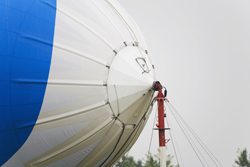European research develops unmanned aerial vehicles
The High Altitude Aircraft and Airships (HAAS) sector is developing a number of unmanned aerial vehicles (UAVs), unmanned airships and long-endurance aircraft. These flight vehicles are designed to travel at 10–20 kilometre altitudes, acting as surveillance and telecommunications platforms as well as weather and emergency/disaster centres for both civil and defence applications. They have the potential to provide satellite capabilities at a fraction of the cost. European scientists initiated the USE HAAS project to develop a strategic roadmap for the European HAAS sector and to develop solar-regenerative fuel cell propulsion for the aircraft. The project also evaluated the world state of the art in HAAS including UAVs (Global Observer, Heron, Hermes and Mercator), unmanned airships (ATG stratsat and Lockheed Martin HAA) and long-endurance aircraft (Helios). Through two workshops including presentations of worldwide ongoing HAAS projects in Europe, Japan, Korea and the United States, they developed research objectives to achieve European HAAS deployment. In addition, they prepared an SRA based on user services and perceived benefits, which was accepted. Overall, the USE HAAS project successfully launched the European HAAS sector equipped with the SRA proposed by project members.

